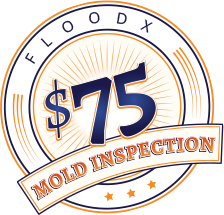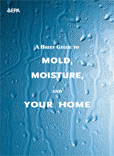How To Detect Mold In Your House

Telling whether there’s mold in your home is such an uphill task—it forms in hard-to-see areas, including ventilation ducts, inside the walls, and more. Yet it’s an important thing to do. Mold is detrimental to your walls and your overall health. Mold can cause chronic fatigue, frequent headaches, breathing difficulties, and more.
So how would you know there’s mold in your house? Most people use their sense of smell to check for mold in their homes. A damp smell in your home may indicate the presence of mold in your house. It’s also to be aware of different mold symptoms, including watery eyes, frequent sneezing, runny nose, etc.
Also, you should check for the area exposed to flooding or water damage. Such places are breeding grounds for mold.
Mold Exposure Test
The most effective way of checking for mold in your house is using the mold exposure test. Flood X has professionals ready to come to your home and test for mold that may be causing you issues.
Signs that indicate mold presence
If you notice visible mold spores
While this is the most obvious sign to detect mold in your house, it could mean that the problem is already worse. If you can visibly see the mold, then it means that there’s more hiding beneath the walls and requiring immediate intervention.
Experiencing flu-like symptoms
If you’re are experiencing flu-like symptoms akin to a virus, you could be up to a mold issue in your home. The best way to tell is to spend a few nights away from home to pinpoint what you feel. If you feel better while away from home but get worse when at home, then that means you have mold in your home.
Frequent nose-bleeding
It may be of great concern when you experience frequent nose-bleeding. You should see your doctor see any underlying medical issues. But if it persists, then you may be having mold in your house.
Checking flooding areas in your home
If some areas in your home are prone to flooding and water damage, you should check for mold presence. However, it takes a long time for mold to develop in flooding areas.
Damp smell
It would help if you investigated any unusual smell in your home. A moldy or musty odor indicates the presence of mold in your house.
Frequent headaches
While the doctor may rule out possible causes of headaches, experiencing frequent headaches may be a possible sign of mold infestation.
What Now
You should beware of molds if your home has a flooding history or has been experiencing symptoms including frequent headaches, difficulty breathing, and damp smells. Doing a mold exposure test and checking to see molds on your walls will help you know whether your home has molded.
Google+








